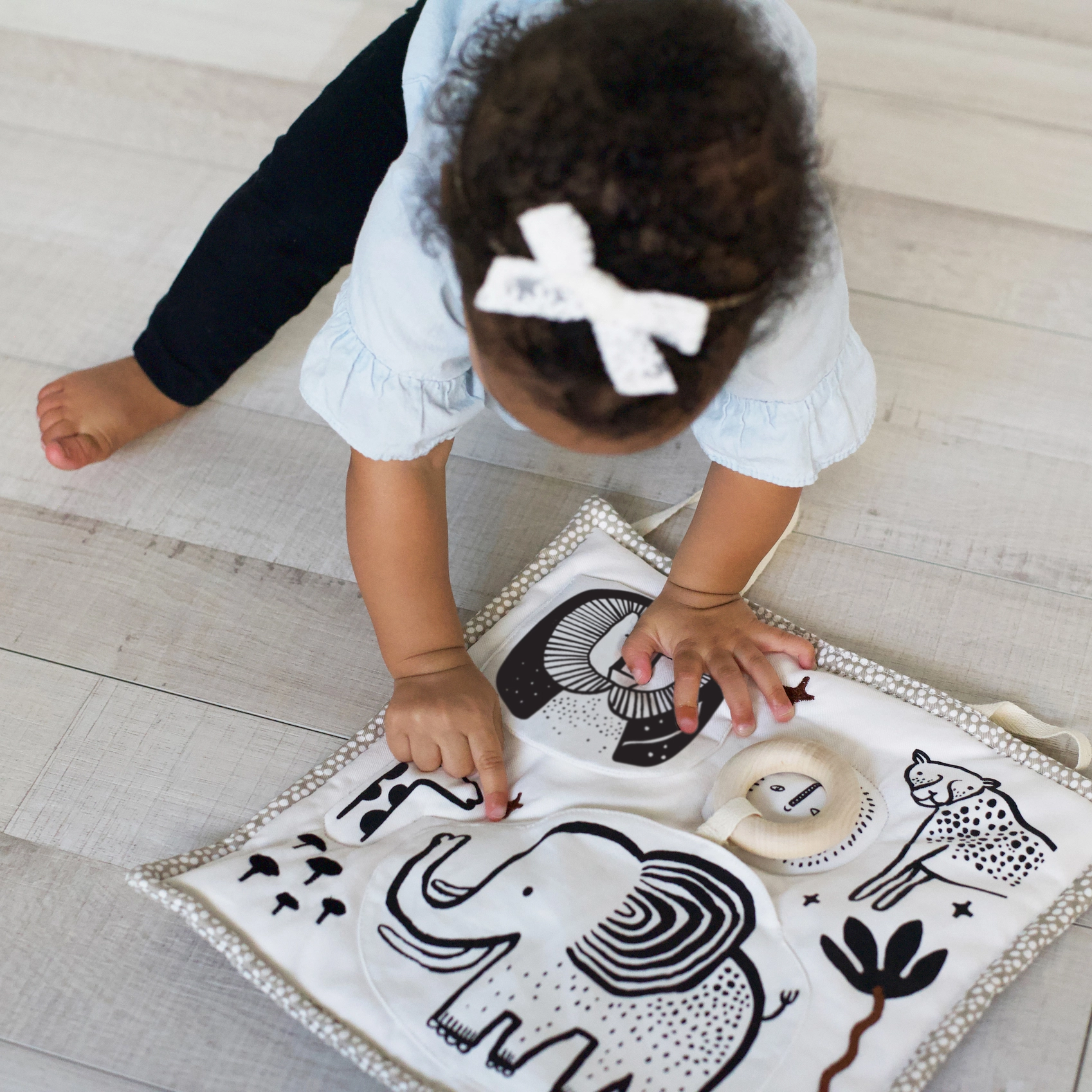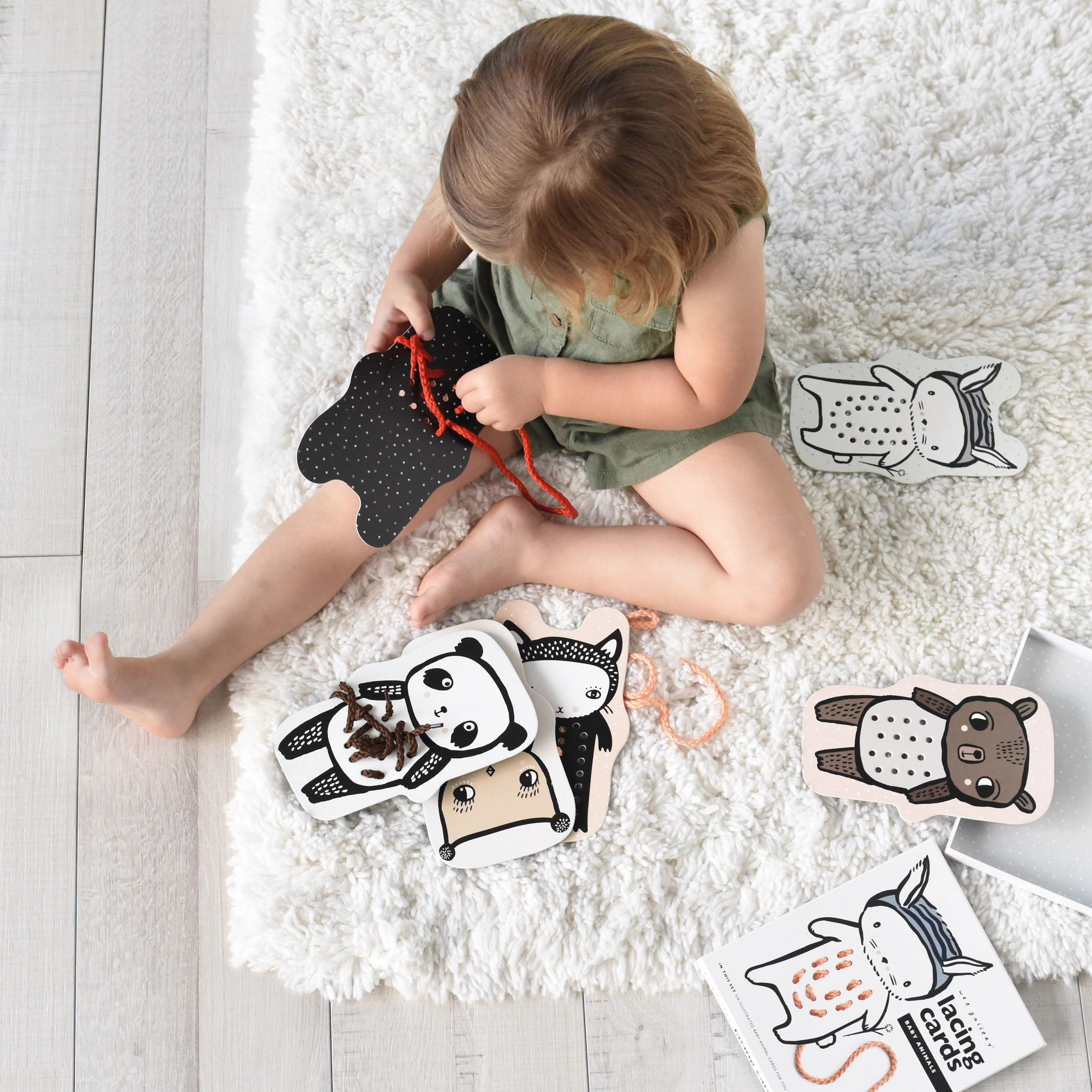Fine Motor Development Through Play
- LeCha Brown

- Feb 23
- 3 min read
Updated: Feb 24
Fine motor development refers to the growth of small muscle movements, primarily in the hands and fingers, that enable activities such as grasping, pinching, and manipulating objects. These skills are essential for everyday tasks, including eating, dressing, writing, and self-care. By engaging your little one in appropriate play based learning activities, you can encourage fine motor skill development in a natural way.
Fine Motor Milestones: Birth to 48 Months
Each stage of early childhood presents new opportunities for developing dexterity, hand-eye coordination, and precision. Understanding these milestones will help provide you with appropriate activities and toys that support fine motor growth.
0-6 Months: Early Reflexes and Grasping

Reflexive grasp (closes fingers around objects placed in hand)
Begins to bat at and reach for objects
Holds objects briefly before dropping them
Play-Based Activities:
Soft rattles and fabric books for grasping
High-contrast mobiles to encourage reaching
Finger play and gentle hand massages to increase awareness
Tummy time with textured toys to encourage reaching and grabbing
Sensory bags filled with different materials to explore textures
6-12 Months: Improving Hand Control

Transfers objects between hands
Uses pincer grasp (thumb and forefinger) to pick up small items
Bangs objects together and explores textures
Play-Based Activities:
Stacking rings or soft blocks
Textured balls for grasping and rolling
Finger foods to encourage self-feeding
Playing with nesting cups to practice grasping and releasing objects
Simple cause-and-effect toys, such as push-and-pop toys, to develop hand strength
12-24 Months: Refining Dexterity

Points with index finger
Turns pages in board books
Begins scribbling with crayons
Play-Based Activities:
Large chunky crayons or washable markers
Shape sorters and nesting cups
Playdough for squeezing and molding
Puzzles with large knobs to encourage hand-eye coordination
Playing with stickers and simple Velcro boards for pinching practice
24-36 Months: Strengthening Coordination

Uses spoon and fork with improved control
Builds small block towers
Begins snipping with child-safe scissors
Play-Based Activities:
Simple lacing cards or threading beads
Pegboards and puzzles with large knobs
Water play with pouring and scooping tools
Using tongs or tweezers to pick up small objects like pom-poms
Playing with toy nuts and bolts to practice twisting and gripping
36-48 Months: Advanced Precision and Control

Uses tripod grasp (three-finger grip) for writing tools
Manipulates small objects with ease
Buttons and zips clothing with assistance
Play-Based Activities:
Cutting along lines with safety scissors
Tracing shapes and letters
Small building blocks
Bead stringing for refining pincer grasp and hand stability
Using eye droppers or syringes in water play for fine motor strengthening
Best Practices for Encouraging Fine Motor Development
Provide hands-on experiences: Offer a variety of textures, shapes, and sizes for exploration.
Encourage self-help skills: Let them practice dressing, feeding, and personal care tasks.
Offer open-ended materials: Items like playdough, crayons, and building blocks allow creativity while strengthening muscles.
Model and demonstrate: Show children how to grasp and manipulate objects, encouraging imitation.
Promote bilateral coordination: Engage in activities that require both hands, such as tearing paper or rolling dough.
The Role of Toys in Fine Motor Development
Toys play a crucial role in fine motor development by providing hands-on experiences that enhance grip strength, dexterity, and coordination. Carefully chosen toys will help your little one develop precision, control, and hand-eye coordination in a fun and engaging way.
Infants (0-12 months): Soft rattles and textured balls encourage early grasping, while fabric books and high-contrast toys promote visual tracking and reaching. Activity gyms with hanging toys provide opportunities for batting and grabbing, strengthening finger muscles.
Toddlers (12-24 months): Stacking toys and shape sorters develop grasping and manipulation skills, while large crayons and chunky puzzles refine hand control. Pop-up toys and simple musical instruments like xylophones help improve hand-eye coordination and finger strength.
Preschoolers (24-48 months): Lacing beads, small interlocking blocks, and threading toys promote precise finger movements. Play-dough activities enhance hand strength, while child-safe scissors and tracing boards help prepare for writing and self-care tasks.
Beyond specific toys, incorporating real-life tasks—such as letting children help with stirring while cooking, buttoning clothes, or peeling stickers—can significantly enhance fine motor development. Toys that require pinching, twisting, and pressing provide vital muscle-building exercises that support everyday functional skills.
By integrating these toys into daily play, caregivers can create a rich learning environment that fosters fine motor skill development in a natural and engaging way. Through play-based learning and carefully selected toys, caregivers can support the natural development of these skills, ensuring children build the strength, coordination, and precision needed for future academic and life skills. Encouraging fine motor play from infancy through preschool sets the foundation for confident and capable hands.












Comments